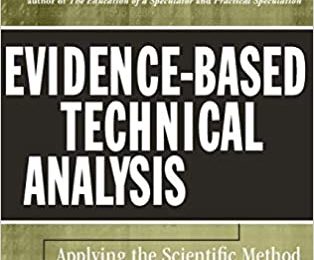Contents

So while GameStop stock surged, hedge fund Melvin Capital Management lost 53%. On the other hand, this can function as a stop-loss provision. As potential losses on a short sale are unlimited, a margin call effectively limits how much loss your position can sustain. The major negative of margin loans is that they enable you to leverage an investment position. While this can bring the opportunity for extraordinary profits, it also multiplies your losses on the downside. Here’s an example of how taking a short position on a stock could work for an average investor.

Add in high interest rates and a potential recession, and Nvidia’s shares may continue to drop. The game usually sells on eBay for $40, but right now you notice a lot of people are buying it for $50. If you short a stock, you are basically saying that you think the stock is going to lose value, not gain it. I’m currently in a business class and I was wondering what it means to short a stock. I’m extremely determined to create a millionaire trader out of one my students and hopefully it will be you.
When evaluating offers, please review the financial institution’s Terms and Conditions. If you find discrepancies with your credit score or information from your credit report, please contact TransUnion® directly. Gordon Scott has been an active investor and technical analyst or 20+ years. Schwab does not recommend the use of technical analysis as a sole means of investment research.

There are a variety of ways that you can https://forex-world.net/-sell stocks, and although the steps to short-selling are broadly the same, the specifics of the process will depend on the method you use. “But if you short it and it goes to $200, $300, $400 etcetera, your losses are compounded,” Canine said. Yet the transaction is based on your view that the stock is overvalued, and therefore will drop in price. If XYZ rises to £60, then you might have to buy your shares back for £10 more than you sold them for – earning you a £100 loss. You contact your broker and borrow 10 XYZ shares, then sell them immediately for £500.
What Does Shorting a Stock Mean?
Opening and closing the trade can be made through the regular trading platforms with most brokers. However, each broker will have qualifications that the trading account must meet before they allow margin trading. If an investor’s account value falls below the maintenance margin, more funds are required, or the position might be sold by the broker. For example, as long as your 100 shares of stock XYZ remain at $80 per share, you’ll need $2,400 in your margin account—assuming a 30% equity requirement ($8,000 x .30). However, if the stock suddenly rises to $100 per share, you’ll need $3,000 ($10,000 x .30)—requiring an immediate infusion of $600 to your account, which you may or may not have. The short position in stocks only fetches money when the price goes down, and if you are wrong about the prediction of the price movement, then the loss is potentially limitless.
In traditional investing, you take long positions, believing that your market is going to rise in price. Later, you’d close your position by selling the asset on and taking any profit. When you short sell, you’re taking the position that the market is going to fall in value. Later, you’d close your position by buying the asset back for a lower value and taking the difference as profit. Short-Sellers open a position by borrowing shares of a particular stock they expect to decline in value.
It’s quite common for long-term stock investors to earn profits that are several times the size of their initial investment. Specifically, when you short a stock, you have unlimited downside risk but limited profit potential. This is the exact opposite of when you buy a stock, which comes with limited risk of loss but unlimited profit potential. When you buy a stock, the most you can lose is what you pay for it. If the stock goes to zero, you’ll suffer a complete loss, but you’ll never lose more than that. Sometimes, you’ll find an investment that you’re convinced will drop in the short term.
As a speculative activity, traders hope that massive profits will be booked when the price of the underlying stock falls. But most investors use short selling to hedge their long positions in an underlying stock. When hedging, investors essentially open an offsetting position to minimise their risk exposure in the market. Granted, hedging reduces risk, but it limits profitability as well. When prices of an underlying stock jump higher, the hedge position will incur losses, but the original long position will generate profits.
A similar issue comes up with the voting rights attached to the shorted shares. Unlike a dividend, voting rights cannot legally be synthesized and so the buyer of the shorted share, as the holder of record, controls the voting rights. The owner of a margin account from which the shares were lent agreed in advance to relinquish voting rights to shares during the period of any short sale. During the dot-com bubble, shorting a start-up company could backfire since it could be taken over at a price higher than the price at which speculators shorted. Short-sellers were forced to cover their positions at acquisition prices, while in many cases the firm often overpaid for the start-up. A short seller borrows from a lender 100 shares of ACME Inc., and immediately sells them for a total of $1,000.
It’s easy to understand that you make money after buying a stock when the stock price increases. Traders who want to profit from a declining market can use a strategy called shorting stock. The primary risk of short selling is that your prediction could be wrong, and the stock price may increase instead. And the gamble of an incorrect guess is much higher with short selling than with traditional investing. Short selling is somewhat similar in strategy to a long put options. Long put options grant the buyer the right to sell shares of stock at a preset price in the future, essentially, too, betting a stock’s share price will decline.
The most common reasons for engaging in https://bigbostrade.com/ selling are speculation and hedging. A speculator is making a pure price bet that it will decline in the future. If they are wrong, they will have to buy the shares back higher, at a loss. Because of the additional risks in short selling due to the use of margin, it is usually conducted over a smaller time horizon and is thus more likely to be an activity conducted for speculation.
What does it mean to short-sell a stock, and is it ever a good idea? Ask a Fool
So there’s a clear asymmetry between the potential profits of going long and going short. To succeed over time, you’ll have to identify and repeatedly pick the losing stocks. Short selling presents numerous costs and risks for investors. On the other hand, market participants can also use Shorting to offset the exposure of another part of their portfolio. Several studies of the effectiveness of short selling bans indicate that short selling bans do not contribute to more moderate market dynamics. Research indicates that banning short selling is ineffective and has negative effects on markets.
The 150% consists of the full value of the short sale proceeds (100%), plus an additional margin requirement of 50% of the value of the short sale. Just remember that you are selling first to open a position in hopes of closing the trade by buying the asset back in the future at a lower price. In the case of a short position, the entry price is the sale price, while the exit price is the buy price. It is also important to remember that trading on margin does entail interest, margin requirements, and possibly other brokerage fees. Because short sales are sold on margin, relatively small losses can lead to ever larger margin calls. If a margin call cannot be met, the holder of the short position must buy back their shares at ever higher prices.
Looking to the Futures: Demand Increases for Crude Oil
Look at the major financial disasters of the last several decades and you can usually find a short seller warning everyone that was ignored before the bottom fell out. Whether this is an argument for or against the effectiveness of this idea is a topic of some debate. Short selling is a tough way to make money, as the market historically trends ever upward.
- Occasionally, valuations for certain sectors or the market as a whole may reach highly elevated levels amid rampant optimism for the long-term prospects of such sectors or the broad economy.
- To close a short position, a trader buys the shares back on the market—hopefully at a price less than at which they borrowed the asset—and returns them to the lender or broker.
- IG International Limited is licensed to conduct investment business and digital asset business by the Bermuda Monetary Authority.
- I want students who strive to become strong, self-sufficient traders.
One strategy allows you to profit on the decline of a stock and limit how much you’ll lose on the position. Options present other risks, however, that investors need to be fully aware of before they start trading them. If enough of the stock is sold short and the stock begins to rise, it can kick off a period of soaring stock prices – sometimes running hundreds of percent higher.
Access to Electronic Services may be limited or unavailable during periods of peak demand, market volatility, systems upgrade, maintenance, or for other reasons. However, if you have a firm conviction that a stock price is heading lower, then shorting can be a profitable way to act on that instinct—so long as you’re aware of the risks. Make sure you understand the risks of short selling before taking the plunge. A short position is sometimes detrimental to the capital market; also, if a group of people decided to short a stock, then that particular company may go bankrupt also. Be sure to understand all risks involved with each strategy, including commission costs, before attempting to place any trade. Clients must consider all relevant risk factors, including their own personal financial situations, before trading.
Physical shorting with borrowed securities
Technically, Short-Selling involves first borrowing shares held by other investors. At a later date, the shares need to be repurchased by the Short-Seller, and then returned back to the original owner who lent them. A market maker in corporate bonds is constantly trading bonds when clients want to buy or sell. The trader can hedge this risk by selling government bonds short against his long positions in corporate bonds.
Why Sell Short?
The investor then sells these borrowed shares to buyers willing to pay the market price. Before the borrowed shares must be returned, the trader is betting that the price will continue to decline and they can purchase the shares at a lower cost. The risk of loss on a short sale is theoretically unlimited since the price of any asset can climb to infinity. As mentioned earlier one example of a short squeeze happened in January 2021 with the shares of GameStop, a retail chain that sells video games.
Your friend won’t ask for it back until next week, so you decide to sell it on eBay for $50. Next week, when the price goes back down to $40, you can buy a new one, give it back to your friend, and pocket the $10. Since the owners love you, they’ll loan you a copy of COD11 on launch day for $10.
But, you anticipate the stock’s price to fall and short 100 shares for a total sale price of $10,000. You are reluctant to sell, but you’re also worried about the company’s short-term prospects due to an adverse news event, a disappointing earnings report, or a looming bear market. If you’ve seen the movie “The Big Short” then you probably have a basic idea of the mechanics behind short selling. While that’s an extreme example, it’s a technique that can be employed by everyday traders, even those with small accounts. The risks of loss from investing in CFDs can be substantial and the value of your investments may fluctuate.
They said, https://forexarticles.net/ selling coupled with STT is guaranteed to increase your account balance of you follow the rules and don’t get greedy. Another risk is that when you short sell, it’s not a given that you’ll be able to repurchase all of the shares you want to buy at the price you want to pay. It is important to bear in mind that the life span of an option is limited. Traditional short sales have no expiry date unless the person that you have borrowed the shares from decides to recall their shares, which can happen at any time. The shares do fall in price as you predicted, down 200p to £38 per share, and you buy 100 shares back at the new, lower price, for £3800.